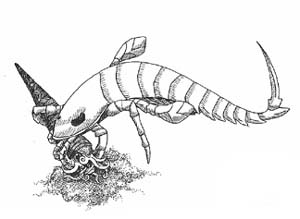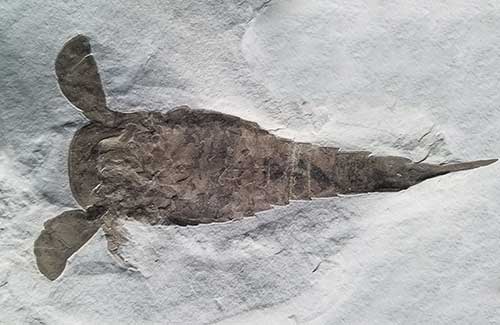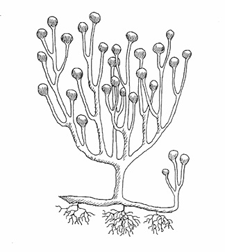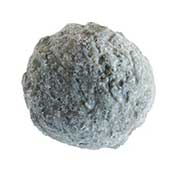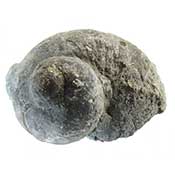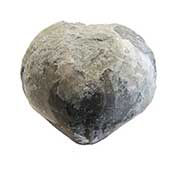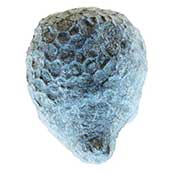Sign up for Lesson Plans, discounts & more!
The Silurian Period:
Plants Move Onto Land
The Silurian Period- giant sea scorpions, the first plants on land, coral reef builders, and major events shaping climate and geography on earth. Ah but the details... following the extinction event at the end of the Ordovician Period in the Paleozoic Era, the Silurian began around 443 million years ago and lasted for 26 million years. Like the periods that have come before, it is named for an ancient Celtic tribe that lived in Wales where the first geologic evidence was found.
The Silurian Climate
The climate was much warmer during the Silurian Period. This caused the glaciers to melt and the seas to rise. Even though the sea level was rising, there were places where the land was slowly rising as well. This was due to mountain building as the continental plates collided. In these places the seas moved away from the coasts or evaporated from the shallow areas. This left salt deposits. Plants that had lived in the coastal water had to adapt to life on land or die.
Continents
Gondwana was still
located in the southern hemisphere, but it stretched from the Equator,
where modern-day Australia was located, to the South Pole, where modern
South America was located. The tectonic plate that contained North
America was moving toward the southeast. By the end of this period it would collide with another plate and form a mountain range.
Most of North America was covered by shallow seas during this time.
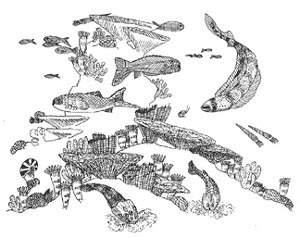
Life in the Seas of The Silurian Period
Of course, the warm
shallow seas made good conditions for marine life to grow. The species
that survived the mass extinction at the end of the Ordovician Period
branched out and developed new variations. Among these survivors were
the nautiloids, brachiopods, bryozoans and crinoids. Crinoids were
filter feeding echinoderms that grew on long stalks attached to the sea
bottom. They looked like flowers floating in the water. The long
feathery arms caught the food for the crinoid.
The Rise of The Eurypterids
Cephalopods were smaller and
there were fewer of them than during the Ordovician Period. The
Eurypterids or Sea Scorpions, made their first appearance in the
Ordovician Period. In the Silurian they became the dominant predator.
Eurypterids were arthropods. Arthropods have an exoskeleton and jointed
legs. Crabs, insects, and spiders are all arthropods. One of the Sea
Scorpions of the Silurian grew to be ten feet long. It was a huge
predator that had large claws for snagging its prey.
Coral; The New Reef Builders
The
new life in the Silurian Period was the coral reef. Tabulate corals and
rugose corals formed these reefs in the Silurian rocks. Tabulate corals
lived in colonies that formed chains. The chains sometimes looked like
clumps of organ pipes. Rugose corals are often called horn corals
because their shape looks like the horn of a bull. The tentacles of the
animal reached out the top of the cup. The huge reefs made great hiding
places for the new animal that lived in the ocean: the fish.
Fish were a growing in importance during the Silurian Period. At the beginning, most of the fish were jawless. These were some of the earliest vertebrates, animals with a soft cartilage backbone. By the end of the Silurian many fish with jaws and real bones were swimming in the waters. These animals would soon rule the seas!
Life On Land
Mosses and other primitive plants grew over
the land near the water’s edge. They continued the work of the lichen
turning the rock into soil. There are a few fossils from the end of the
Silurian Period that show us early insects lived among these mosses and
made their own colonies.
The Cooksonia Invent Vascular Tissue
The soil made by the lichens grew strange plants called Cooksonia.
These plants had stems, but no real leaves. Some Cooksonia had special
tissues for carrying water and nutrients upward to the branching parts
of the plant. This vascular tissue is common in modern plants, but was a first during the Silurian Period.
The next period is the Devonian Period
Preceeding the Silurian Period is the Ordovician Period
Fossils from the Silurian Period for sale at our sister site Fossilicious.com
Check out some of the Educational Materials for sale on our sister site fossilicious.com.

interested in more? If so, you may want to check out our other sites:
fossilicious.com - Our online fossil and mineral rock shop.
rocksandminerals4u.com - An educational site about rocks, minerals, and geology.
Geologic Time Geologic Time Line
Cenozoic Era
Quaternary
Neogene
Paleogene
Mesozoic Era
Cretaceous
Jurassic
Triassic
Paleozoic Era
Permian
Carboniferous
Devonian
Silurian
Ordovician
Cambrian
Archean Time
Hadean Time
Teachers Resources
Activities for Education and Fun
Earth Science Lesson Plans
Activities For Kids
Fossil Lesson Plans
Fossil Activities
Education Articles
Coloring Pages
Dinosaur Coloring Pages
Montessori Materials
Geology Club
Fossil Hunting
 |
 |
 |
